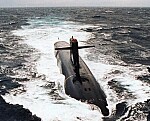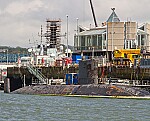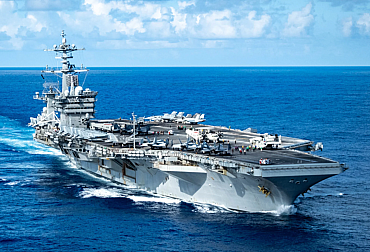U.S. Navy deploys autonomous drone ships for Red Sea attacks
The United States is testing a new series of maritime drones in the Red Sea to keep an eye on an important route and help repel attacks by Yemeni rebels. The Houthis continue their attacks against commercial vessels and U.S. warships, and the U.S. Navy wants to use the new technology to force Iran-linked terrorists to change tactics. In addition to autonomous unmanned surface surveillance vessels, the first autonomous larger robotic warship, the USX-1 Defiant, is soon to join the arsenal.

Attacks by Yemeni Houthi rebels against Israel and all those the terrorist organization considers allies of the Jewish state, including giant commercial ships flying various flags as well as US warships present around the Yemeni coast, have not ceased for more than a year and a half since the start of the latest escalation. After 7 October 2023, it was the Houthis who joined the Hamas attacks on Israel with their drone and rocket assaults, paralysing shipping for months on one of the world's most important sea lanes connecting Asia to Europe via the Red Sea and the Suez Canal. For over a year, they also held the crew of the Bahamian-flagged tanker Galaxy Leader hostage, a group of more than 20, before releasing the international group of sailors in January this year. Most recently, in early April, the Houthis launched a new wave of missile attacks, which also targeted U.S. destroyers. As with the vast majority of previous attacks, the U.S. Navy managed to shoot them all down and respond in turn by targeting Yemeni launch sites.
With the situation north of the Horn of Africa not improving, quite the contrary, the U.S. Navy is expanding its strike capabilities. A task force formed a year ago is now conducting stress tests of unmanned surface craft, also called maritime or ship-borne drones. From the Jordanian port of Aqaba, the Americans have so far launched several surveillance drones to monitor movements in the Red Sea region and raise U.S. situational awareness there. They are to carry technology capable of autonomous navigation independent of GPS in the event of enemy efforts to disrupt communications or block satellite signals. They are smaller surface unmanned vehicles, also known as Small Unmanned Surface Vessels (SUSVs), about 4 meters in length.
"Here at 5th Fleet, there are certain waterways where GPS doesn't work - you can't just cruise through there with a regular GPS because the navigation will point you elsewhere, so your location is not accurate. So there is a payload stored in this smaller maritime drone that allows it to determine its true location when the signal is jammed," according to Commander Echeverria of the U.S. Navy, commanding officer of Bahrain-based Task Force 59.1, told Military Times, without providing further details.
The group, referred to as the Pioneers, is specifically responsible for the deployment of waterborne drones and the integration of unmanned systems into the Navy, as well as greater use of artificial intelligence and testing of other technologies useful in this regard. Due to the sensitivity of the information, the U.S. is relatively reserved about divulging further details regarding the vessels' equipment and capabilities, but it is intended to be a combination of the most advanced and robust features available for military contracts. At the same time, the Navy will be evaluating which of these advanced technologies are best suited to its needs and which, on the other hand, are unsuitable for conflicts at sea. The task force is then to provide the command with a specific set of recommendations after this testing phase. This has already been helped by the Lightfish maritime drone from Seasats, which in a live test was able to operate independently of its surroundings for 17 days at sea and travel 600 nautical miles. Other shipboard drones being tested are likely to be variants of Saildrone's Voyager or Martac's MANTAS T12.
In addition to the ongoing attacks and the grueling heat in the Red Sea region, the challenge is the enemy's never-ending quest to steal one of these advanced maritime drones and use it for their own development. In addition to missiles and aerial drones - supplied by Iran, as it did to Russia in Ukraine - the Houthis themselves are also sending their own maritime drones onto ships. These cause great damage, especially to less protected cargo ships. So far, according to the commander of the US Echeverria Group, all US unmanned vessels have been kept from ending up in the wrong hands.
Houthi force publishes footage of attacking British oil tanker "CORDELIA MOON" with an unmanned drone boat in the Red sea. pic.twitter.com/VuMurJ9nzL
— Current Report (@Currentreport1) October 3, 2024
At the forefront of the U.S. initiative of surface unmanned vessels is a larger autonomous warship called the USX-1 Defiant. The Department of Defense Advanced Research Projects Agency (DARPA) project was completed this February, and the Navy is now preparing the first live tests. It's supposed to be a medium-sized robotic ship, nearly 55 metres long and 240 tonnes displacement, fully autonomous and, like its smaller counterparts, capable of more advanced enemy tracking - and, presumably, of launching sub-drones or missiles on its own in the future. It was designed from bow to stern completely unmanned, including situations such as refueling, where no operator is needed on the USX-1 Defiant end. It could be deployed into full service as early as this summer.










